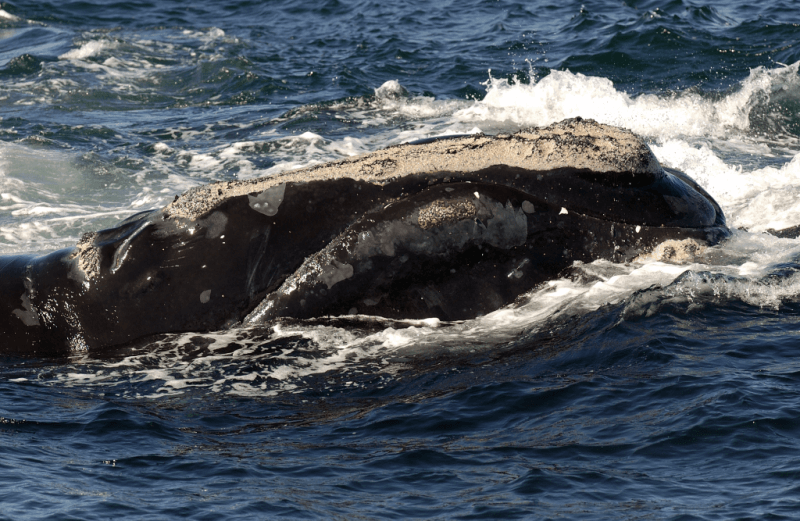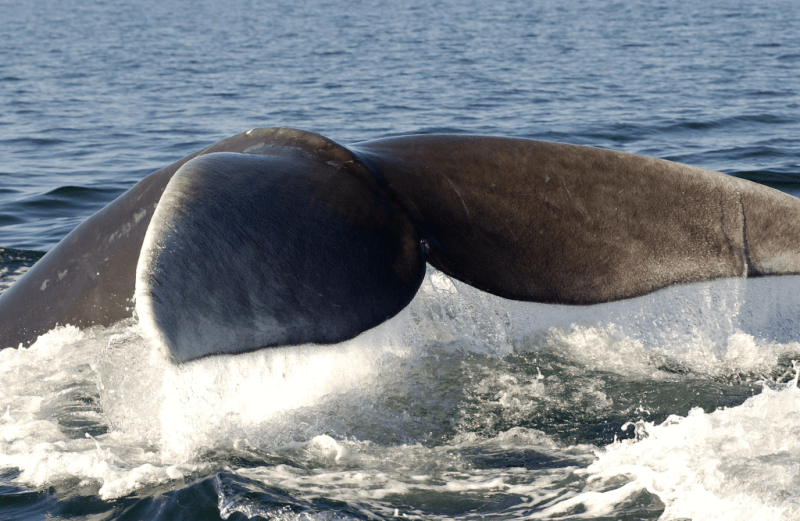Feeding
North Atlantic right whales are skimmers that can feed in deep waters or at the surface. They feed on zooplanktonic crustaceans such as copepods and occasionally krill. They sometimes feed in groups.
On the surface
Right whales spend a great deal of time at the surface and are very slow swimmers. Their low responsiveness to passing boats is an important factor in their mortality. But their aerial feats are impressive: they leap out of the water and land loudly on their back or belly, or slap the surface with their tail and pectoral fins. With their head pointing vertically out of the water, they sometimes spy on boats, a behaviour known as spyhopping. They can also let their head drift down and their tail rise up out of the water. They generally raise their tail when they dive.
Diving
Their dives last between 6 and 8 minutes, but can reach up to 60 minutes. Their prey are mostly found within the first 100 m or so below the surface, although they can dive as deep as 200 m.
Social
Rather solitary, they may be seen swimming in pairs or in small loosely knit groups of about 10 individuals, and sometimes even up to 50. Sexual behaviours (fondling, rolling) are observed year round, i.e. outside of the reproduction periods. At the surface, multiple highly dynamic males may jostle one another in pursuit of 1 or 2 females.
Vocalization
Right whales emit essentially low-frequency vocalizations (below 500 Hz): grunts, squeaks, percussive sounds and some high-pitched sounds between 1500 and 2000 Hz. The purpose of these sounds is poorly understood. They appear however to be used for communication and the social life of groups active at the surface.









